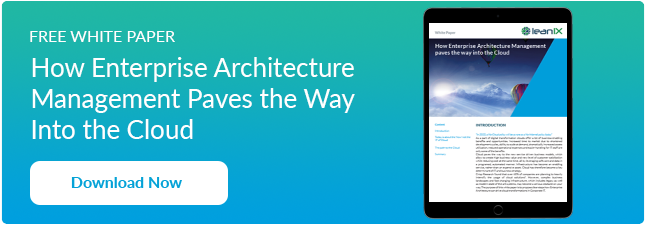
According to a 2016 IDG study, large enterprises have embraced the rise of data analytics, with 78% agreeing that data strategy, collection and analysis have the potential to completely change the way they do business. Before the insights of consumer trends were collected and analyzed, businesses first created a product, then spent costly marketing dollars to shape the minds of consumers to desire said product.
That model has changed.
Social Media and other data mining platforms have opened up a two-way dialogue between consumers and the outside world and gave businesses an endless supply of meaningful consumer data. This data can be gathered and referenced for finely tuned market research.
EAS armed with Big Data are more valuable to their organizations
EAs are one of the top three individuals in an organization involved with analyzing big data and making decisions. EA’s can leverage Big Data to position themselves in a more constructive role - advising directly to the CIO. Since EAs have a holistic view of the business goals, IT landscape, key challenges, and business outcomes, adding the insights of Big Data will give a complete picture of possible outcomes when making business decisions.
EAs would benefit from creating a Big Data strategy
Although most companies recognize Big Data as a valuable tool, 77% of business don’t have a big data strategy. This information can be a valuable business asset if used in the right combination of strategy, technology, and execution. There is no one size fit all strategy for all organizations, but below are a few tips to create a strategy suitable for your company.
- Define your strategy with the end goal in mind. Which problems are you looking to solve? Which analytics to focus on?
- invest in agile data solutions. Invest only solutions that allow your company to scale when necessary.
- Establish effective governance to support your new solution. Make sure the data is both reliable and useful to the organization.
- Focus on a long term vision, and be willing to adjust along the way.
Implement tools to visualize BIG data
Not every team member will have the technical background to understand the information presented from Big Data inquiries. Gartner claims that If 70% of users were able to leverage big data insights without technical backgrounds, the impact on operations and revenue could be enormous. The power of Big Data comes not from just amassing it and letting the data age in IT departments, but from using the insights to make data-driven decisions with measurable results.
Many startups and SaaS providers are making data visualization tools. Research one tool that is suitable for your company. Check out LeanIX’s data visualization solutions for your enterprise.
Enterprises of any size can benefit from the use of Big Data
Small to medium sized businesses (SMBs) stand to gain the same benefits as larger corporations when using Big Data the right way.
SMBs can benefit from analyzing:
- Website analytics
- Social media analytics
- Inventory
- Sales Data
- Heat Map Data
In turn, SMBs can harness this information to create web applications, fine tune their sales processes, or simply tweak the copy on their landing pages. Big Data provides much needed context for making data-driven decisions and creating products and services that customers actually want. The more citable data that you have, the more accurately you can predict the desired or undesired outcome.
Big Data is a powerful tool that enables EAs to embark upon new opportunities, reduce costs, better serve customers, and eliminate risks. Are you using Big Data to your advantage?


/EN/Reports/Thumbnail-Obsolescence-Gartner.png?width=140&height=100&name=Thumbnail-Obsolescence-Gartner.png)
/EN/White-Paper/EN-IDC-Inforbrief-Application-Rationalization-Portfolio-Management-Thumbnail_v2.png?width=140&height=99&name=EN-IDC-Inforbrief-Application-Rationalization-Portfolio-Management-Thumbnail_v2.png)
